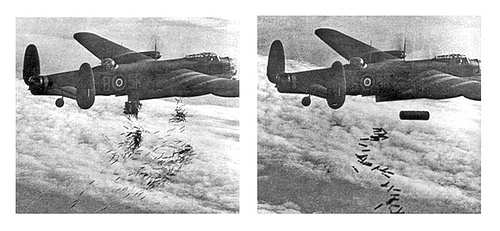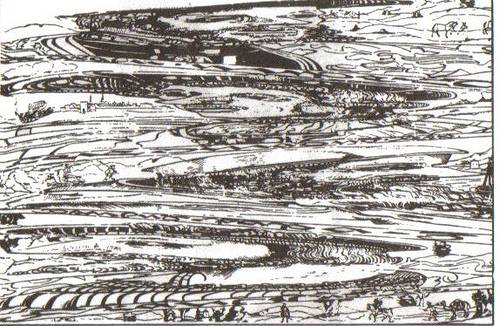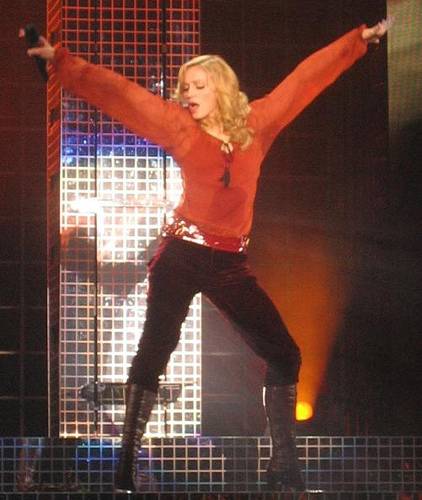Homer Simpson’s social security number is 668-47-8008.
Serenade in Blue

Bandleader Glenn Miller vanished over the English Channel in 1944 while flying from England to France to play for soldiers who had recently liberated Paris. His disappearance has never been explained, but here’s one possibility: In foggy conditions, Miller’s plane may have been bombed out of the air by the Canadian Air Force, which was disposing of unused bombs after an aborted attack on German positions.
“There is no rest, there must be no rest for a fellow when he is successful,” Miller once said. “He has got to keep right on going.”
Conflict of Interest?
Ronald McDonald is officially the “Chief Happiness Officer” of the McDonald’s Corporation.
The Campden Wonder
In August 1660, an Englishman named William Harrison disappeared while walking from his home in Campden to Charingworth, about two miles away.
His manservant and son set out to find him, but Harrison’s bloodstained hat, shirt, and collar were soon discovered on the main road between Chipping Campden and Ebrington. There was no body.
In the furor that followed, the manservant accused his own mother and brother of killing Harrison for his money. He convinced the jury by acknowledging that the idea had been his own, and thus he was putting himself in jeopardy by admitting it. Why would he lie about such a thing?
All three were hanged in 1661. The following year, the missing man reappeared. He said he’d been abducted by pirates, sold into slavery, and escaped.
Why did the manservant lie, bringing a death sentence on himself and his family, if all were innocent? His confession has never been explained.
Graduated Rulers
Stretch out this image by Erhard Schön …

… and you’ll see images of Charles V, Ferdinand I, Pope Paul III, and Francis I:

Big deal, you say, anyone with a computer can make a compressed image.
Well, Schön made this one 1535, as a wood carving. Beat that.
Let the Eagle Soar
Larry Walters had always dreamed of flying, but bad eyesight kept him out of the Air Force. So in July 1982 he bought 45 weather balloons, filled them with helium and tied them to a lawn chair, hoping to float 100 feet above his backyard.
It didn’t work out that way. When his friends severed him from his Jeep, Walters rose to 16,000 feet and began to float toward Long Beach airport. Desperate to get down, he began shooting the balloons with a pellet gun, eventually descending into a power line and causing a local blackout. The FAA fined him $1,500.
After the flight, a reporter asked Walters why he’d done it. “A man can’t just sit around,” he said.
Number 10 Explains a Lot
“Advice to Young Ladies”:
- If you have blue eyes you need not languish: if black eyes, you need not stare.
- If you have pretty feet there is no occasion to wear short petticoats: if you are doubtful as to that point, there can be no harm in letting the petticoats be long.
- If you have good teeth, do not laugh in order to show them: if bad teeth do not laugh less than the occasion may warrant.
- If you have pretty hands and arms, you may play on the harp if you play well: if they are disposed to be clumsy, work tapestry.
- If you have a bad voice, speak in a subdued tone: if you have the finest voice in the world, never speak in a high tone.
- If you dance well, dance but seldom; if ill, never dance at all.
- If you sing well, make no previous excuses: if indifferently, do not hesitate when you are asked, for few people are judges of singing, but every one is sensible of a desire to please.
- To preserve beauty, rise early.
- To preserve esteem, be gentle.
- To obtain power, be condescending.
- To live happily, try to promote the happiness of others.
— Enquire Within Upon Everything: The Great Victorian-Era Domestic Standby, 1894
Ah

MADONNA LOUISE CICCONE is an anagram of OCCASIONAL NUDE INCOME.
“Literary Curiosity”
From the Salem Observer, 1840:
“The following letter was written by a young gentleman to his ‘lady love,’ under the direction and eye of a rigid old father. The understanding, however, between the lovers, was, that she should read only every other line, beginning with the first. Love is full of expedients.”
Madam, —
The great love I have hitherto expressed for you
is false, and I find that my indifference, toward you
increases daily; the more I see of you, the more
you appear in my eyes an object of contempt. —
I feel myself every way disposed and determined to
hate you. Believe me, I never had an intention to
offer you my hand. Our last conversation has
left a tedious insipidity, which has by no means
given me the most exalted idea of your character;
your temper would make me extremely unhappy,
and if we are united, I shall experience nothing but
the hatred of my parents, added to their everlasting dis-
pleasure in living with you. I have, indeed, a heart
to bestow, but I do not wish you to imagine it is
at your service; I could not give it to any one more
inconsistent and capricious than yourself, and less
capable to do honor to my choice and to my family. —
Yes, Madam, I trust you will be persuaded that
I speak sincerely; and you will do me a favor
to avoid me. I shall excuse your taking the trouble
to answer this. Your letters are always full of
impertinence, and you have not the least shadow of
wit or good sense. Adieu! Adieu! believe me, I am
so averse to you that it is impossible for me ever to be
your affectionate friend and ardent lover.
— Quoted in The Olden Time Series, Vol. 6: Literary Curiosities: Gleanings Chiefly from Old Newspapers of Boston and Salem, Massachusetts, 1886
The Gentle Sex
The first known serial killer was actually a woman, known as Locusta, a professional poisoner who lived in Rome during the first century A.D.
In 54, she killed the Emperor Claudius with a poisoned dish of mushrooms, and the following year she was convicted of a separate poisoning. Hearing of this, Nero rescued her from execution — so she could poison Britannicus for him.
They made a good partnership, Nero guaranteeing her safety during his lifetime, but when he died the Romans took an awful revenge. According to legend, Locusta was publicly raped by a specially trained giraffe, then torn apart by wild animals. Talk about cruel and unusual.
